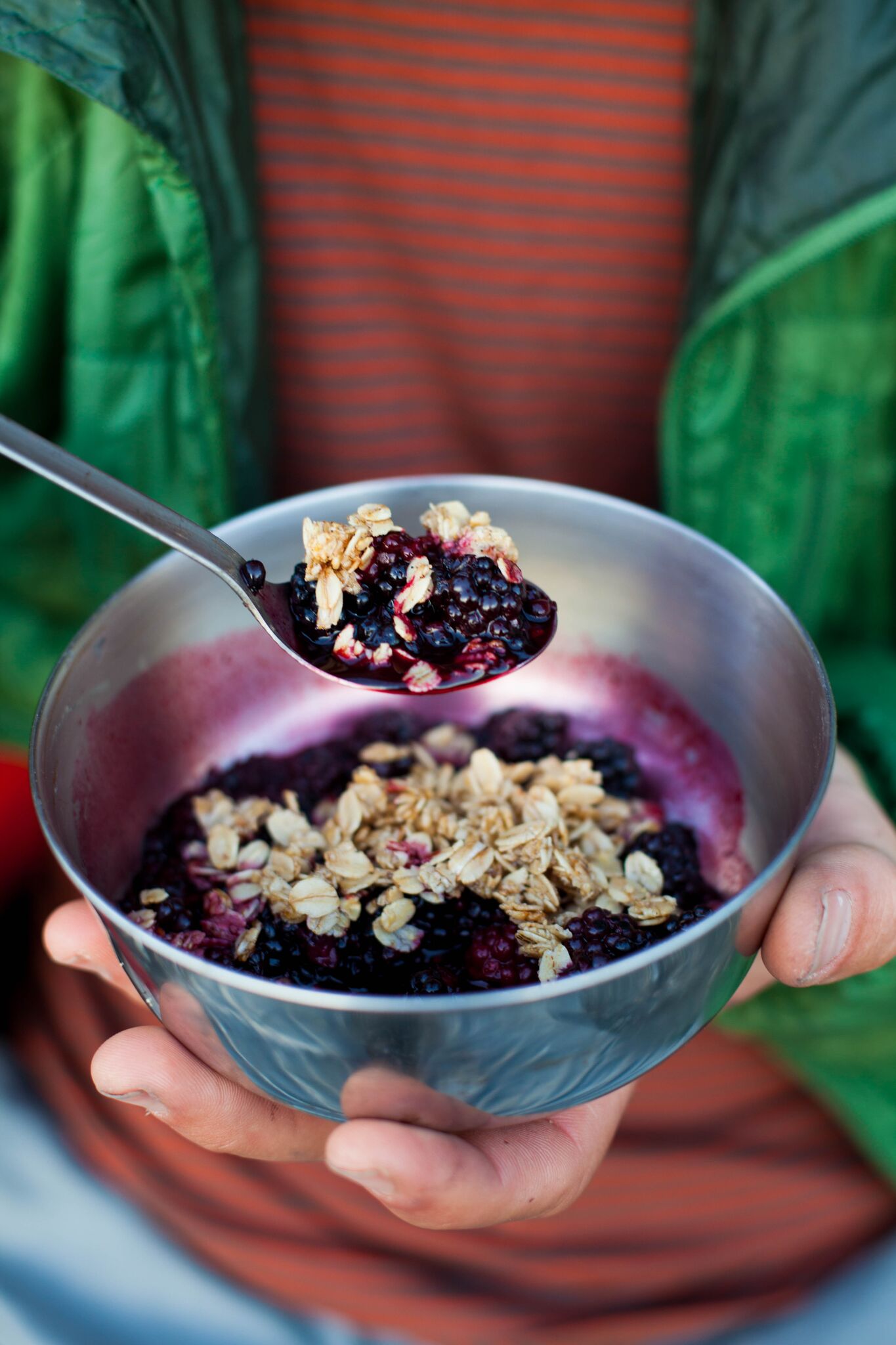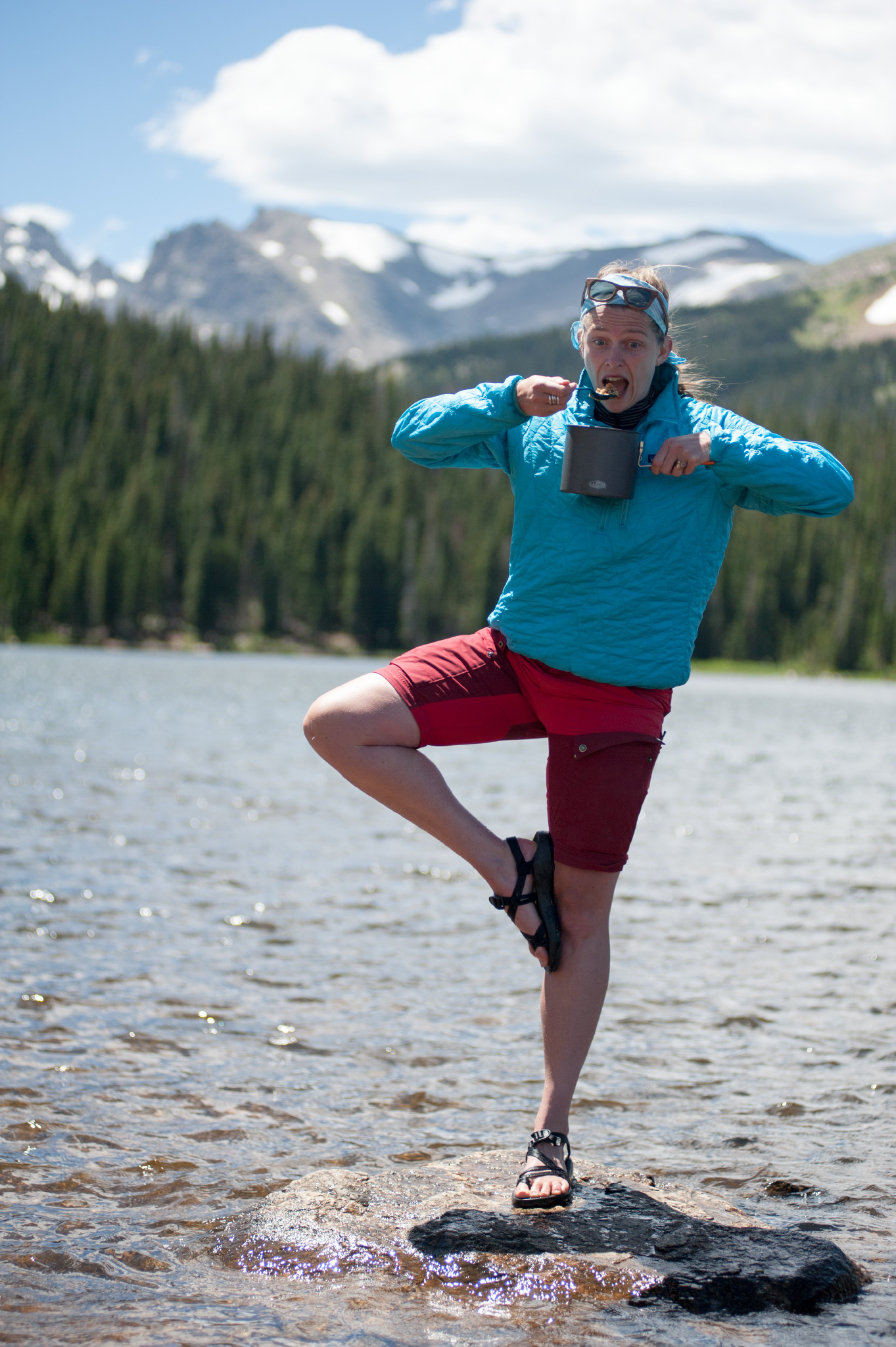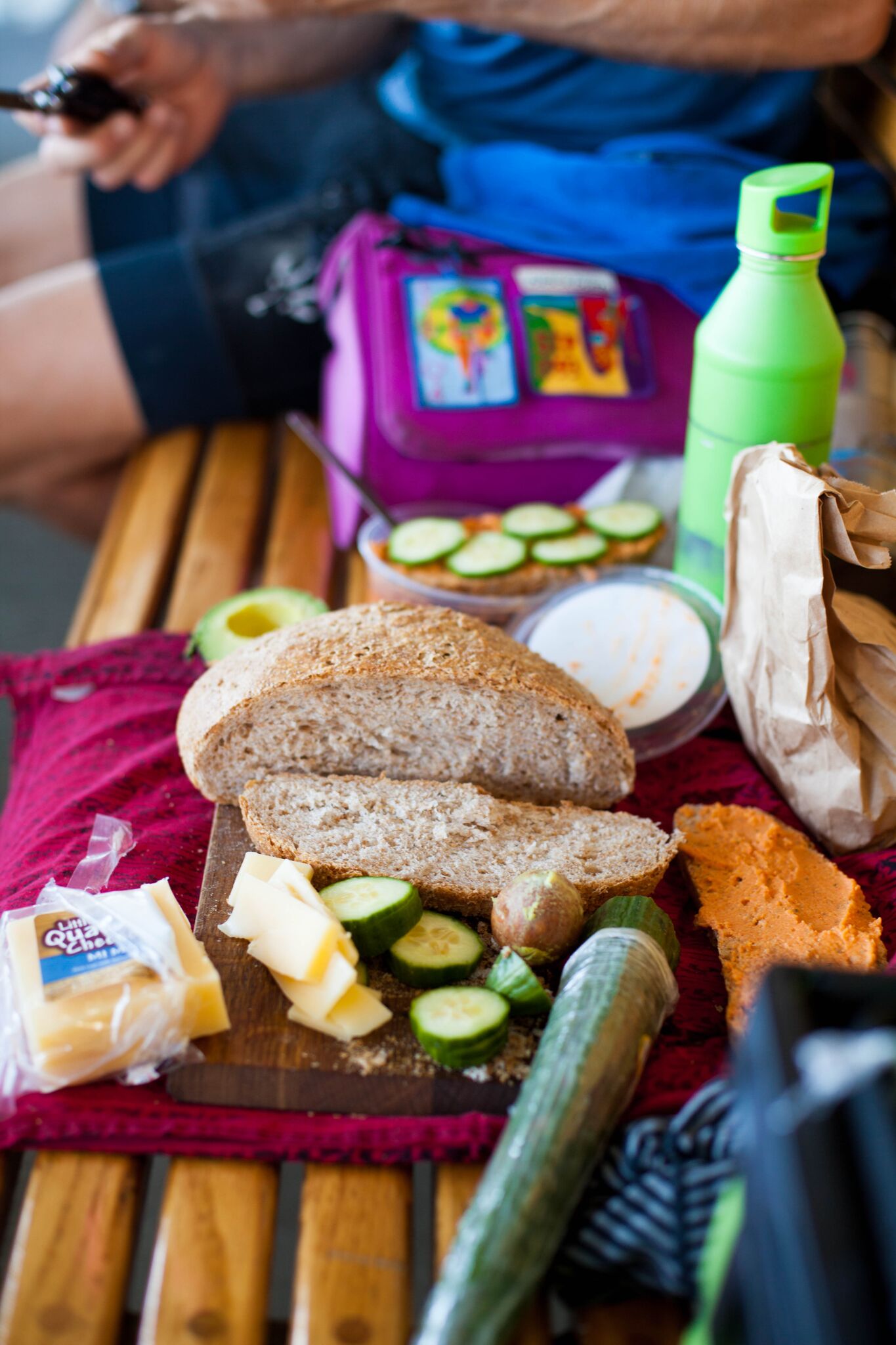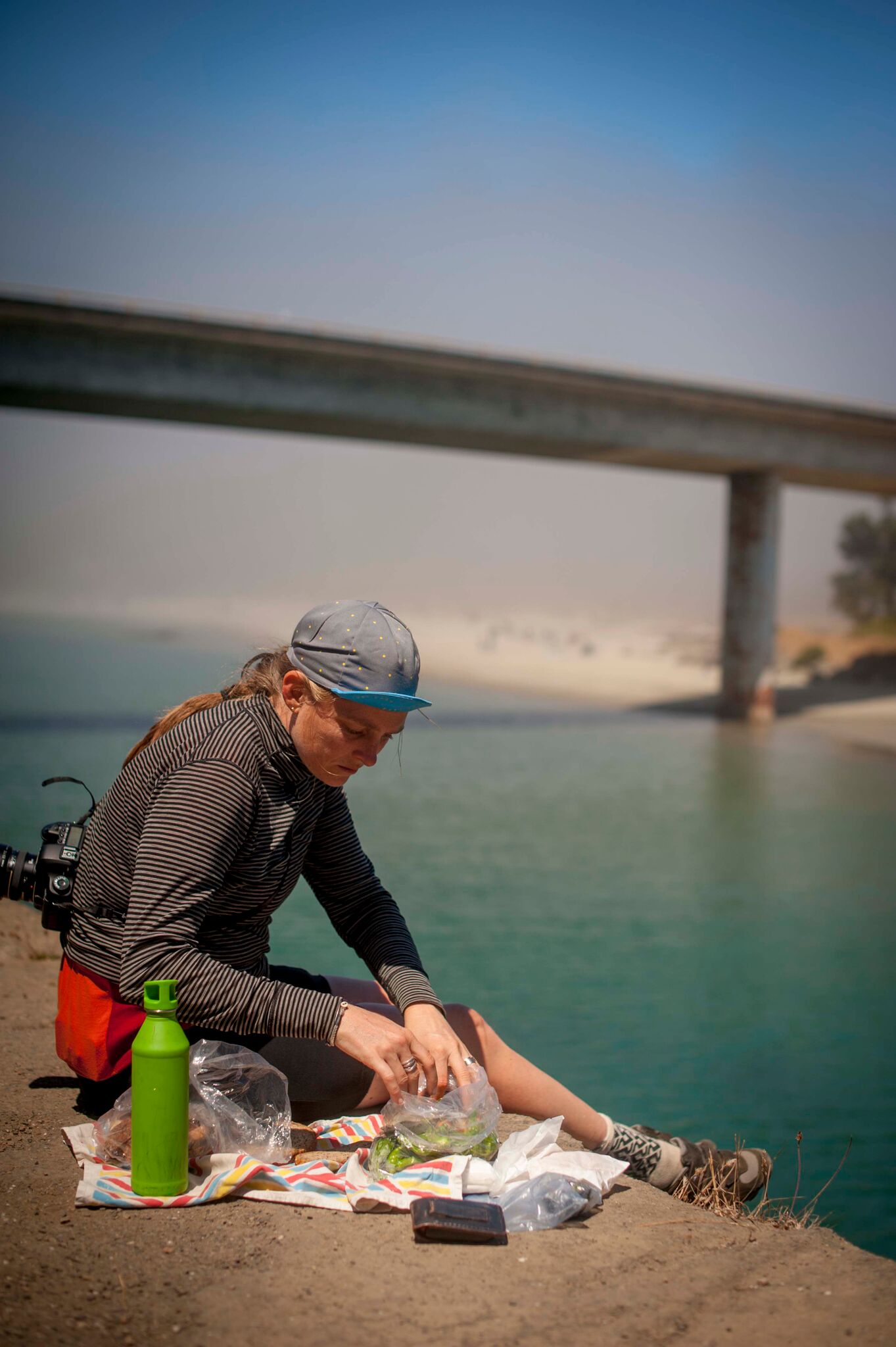Anna Brones
Images courtesy of Anna Brones and Luc Revel
Having grown up as a child of A mountaineer and artist, Anna brones owes a big part of her love of the outdoors, swedish food, and creative flare to her family roots. We sat down with Pacific northwest-based writer, explorer, artist, bike-lover, and activist to hear more about her love of coffee and how to focus on slowing down.
The Interview
MK: Tell us a bit about what your first real adventure was as a kid and what role did food play in it?
Anna: My father was a mountaineer. Because of that, I grew up spending a lot of time outside. Growing up in the Pacific Northwest, we were always doing hikes and all of our summer vacations were always spent doing camping trips. My mom was a really good cook when we did family camping trips, and she would always make really great food sitting around the picnic table. In that sense, I think the two kind of went hand in hand and it was just something I thought was quite normal.
[Laughs] I went to a summer camp when I was younger and then eventually became a camp counselor, so I saw a lot of my formative years within that community. I do remember when I was about twelve, I was old enough to go on the two-week program, and a part of that program there was this three-day overnight camping trip. Normally the camper is not allowed to use the stove – usually, it’s the counselor who is responsible to use them, obviously for safety reasons. I remember convincing my counselor that I had cooked enough on trips and they should let me use the stove. So I ended up making pancakes and quesadillas, I think. But I remember being in charge of the stove and being very proud of myself for doing that.
MK: That’s hilarious! You talked about your dad being a mountaineer and your mom being an influence on your cooking. Did your mom inspire some of the arts that you are doing too? How did that begin?
Anna: Yes, my mom is an artist and she does a lot of different things. She's a weaver, a textile artist, and she does a lot of printmaking as well as other arts. I grew up in a household with a lot of different art supplies. And again, I thought it was just quite normal. You know, I didn't realize that it just wasn't the case in other households. Then, when I got a little bit older, if I ever wanted to draw or paint or cut paper or learn how to knit, there was always those materials that were available. My art influence is definitely from her. Now, I do a lot of paper cut illustrations along with a lot of textile arts as well.
MK: What was your mom’s cooking like growing up?
Anna: She’s Swedish with a very Scandinavian influenced diet. I guess it's not the standard American diet. We always ate a lot of healthy food at home with a lot of whole grains and vegetables – foods my friends at school were not eating and it’s just what I was used to. I was always helping around the kitchen, and that’s what I was expected to do, and it didn't really occur to me that it was particularly special.
MK: For something like your Fika book, when did it occur to you to share this with the North American audience? Like you said, when you were young, it was just normal for you, but a lot of people hadn't really heard about that way of living or eating.
Anna: I went to university and I got a degree in international relations in French and I taught English in the Caribbean for three years. It was during that time I started doing some online writing. It was back in the early days of blog writing, so I contributed a lot, and then after that, I came back and started writing more and more. Eventually I started working for an online magazine where they had a food section, and I started doing recipes on a weekly basis, basically just writing down what I was cooking anyway. Because I was cooking so much, I started publishing more recipes. At that point, I thought, this is fun!
That was around the time when the Scandinavian and Nordic food and culture were starting to get a little bit more well-known. Some of the New Nordic chefs started to get more attention. I felt there was a rising interest in Scandinavian culture and food and I wanted to focus on this one particular Swedish thing that was a very important part of me and my culture. Around that time I did a proposal for Fika, in 2011.
It's always fun when you know you have an idea, but you never know or understand the full impact of something you envision. You never know how people are going to respond or react to it. Fortunately, people really responded to it – not that it’s just about Swedish food culture, but I think also because it’s focused on slowing down. It’s focusing on what you're eating and drinking. Focusing on the surroundings and taking the time to appreciate that moment. I think that it really resonated with people, particularly because we live such crazy chaotic lives right now.
“It’s always fun when you know you have an idea, but you never know or understand the full impact of something you envision.
”
MK: Apart from the Scandinavian influence, do you find that living in the Pacific Northwest has had a big influence on the food experiences that you search out?
Anna: Definitely. I live about an hour and a half outside of Seattle. I think that landscape and weather-wise, there's a lot of similarities between here and Sweden, although it’s obviously a bit milder here than in Sweden. The food is kind of similar, too: with a variety of fish, and root vegetables, and a lot of other produce, so there's a lot of crossovers. There's very much an outdoor culture, and everybody enjoys spending time outside. Most people have some type of activity that they do outside, and there's an appreciation for that. There is very much a food culture here that’s based on seasonal eating, what’s grown locally in the area, and also on ingredients that have been used by the local indigenous groups.
MK: At least in the Pacific Northwest you get a bit of year-round variance, whereas here in Eastern Canada we have a relatively short growing season.
Anna: We have a lot of winter produce here, but I always joke about root vegetable season. For five months, all you are eating is potatoes, beets, and carrots – and eventually, that does get old! [Laughs]
MK: Let’s shift to more towards the adventure food aspect of things. Can you talk briefly about what your personal messkit looks like when you're out cycle touring?
Anna: We always have a lot of coffee and coffee-making devices with us! My husband and I definitely accept that we carry a little bit more weight in our panniers because we have a coffee grinder, along with other coffee essentials, and that's ok because that's something that we like to do. I obviously understand that not everybody likes to carry the extra weight. I would say a spice kit is also pretty important. I always have a small bag with a bunch of different little Nalgene jars containing a variety of spices, like salt, pepper, cumin, chili powder, cardamom, and ginger. And a larger one with olive oil and honey, too. I feel like with those things I can create a decent meal or at least spice up something that tastes boring.
I also tend to have a few basic ingredients that are always going to make something taste good. I'll always have a head of garlic with me. Chopping that up and sautéing it with some olive oil makes a pretty great base for grains or vegetables. One of the things we like to do a lot is to visit bakeries while on cycling trips. We’ll take a few slices of fresh bread, even if they've started to go a little stale, and toss them in the pan with a bunch of olive oil and grill them. Then we take them out and rub them down with a clove of garlic, keeping it pretty simple and delicious. It feels quite classy when you're out camping!
“I think regardless of what you’re doing, it’s always kind of nice to think about what sort of staple dry ingredients you can pair with one or two fresh ingredients.”
We almost always have some base grains like red lentils, some oats, or buckwheat. Then a couple of fresh ingredients that are a little bit more stable, like an onion or carrot. Normally, during cycle trips, we have access to a store at some point every few days, so it's easy to stock up on fresh things to kind of compliment our base ingredients. That's obviously very different from a ten-day backpacking trip where you're really focused on weight. I think regardless of what you're doing, it's always kind of nice to think about what sort of staple dry ingredients you can pair with one or two fresh ingredients.
The tendency when it comes to camp food is that we have gotten so used to eating freeze-dried stuff or dehydrated food, that I think people forget there's a lot of fresh food that you can carry for a few days without it going bad. For example, you could have a carrot at the bottom of your pannier or pack for days and it would be just fine. I think adding some fresh ingredients to camp food just makes it feel a lot more different than regular camp food.
MK: Do you experiment much with a food dehydrator for cooking your meals at home instead of buying pre-made packages?
Anna: I don't actually, but it's certainly something I want to try more. The one thing that I do make a lot myself is I’ll make dried apples in the oven. You can slice them really thinly and put them in the oven at a pretty low temperature until they are dried out. That's kind of nice to have dried fruit with you to put it in oatmeal or snack on.
MK: So, you mentioned coffee. What’s your favourite way to make your coffee when you're on the road?
Anna: Well, we have two styles that we go back and forth between. We have a little titanium French press. That's kind of nice because it's just simple and straightforward. We also have a little aluminum pour-over set-up that folds flat, and when its open there's room to put a filter in it. That works really well, and is pretty easy clean up too. The one problem with the French press is that you have a bunch of grounds that you need to clean out.
MK: If you had to choose between salty, sweet, or savoury, what would you choose?
Anna: I would choose savoury! Although I would put salty and savoury in the same category. I do like to bake a lot, but I think I would definitely prefer savoury, particularly for cycling trips.
MK: Do you have any particular cravings while out on the trail? And have you found ways to satisfy them?
Anna: That’s funny, because Brendan Leonard – my friend that I wrote Best Served Wild with – actually wrote an essay in the book that asks when is it appropriate to start talking about food again. We always joke that we are always talking about food, no matter what (laughs). No matter how many hours in, it's like you know when I get back I'm going to make this or that!
The thing that I crave the most is probably just super fresh food like a big salad. Especially after a cycling trip or long backpacking trip where I’ve been on a diet of grains and dried mushrooms or something like that for a week. [Laughs]
MK: Speaking of Best Served Wild, how did that come about?
Anna: Brendan – who does a lot of outdoor adventure writing – got in touch with me for an idea he had on a cookbook. We’ve known each other for few years, and it was something fun we could collaborate on together. Both of us really like to be outside and eat well, but also we don’t take ourselves too seriously. The book is very much a jumping off point for people, and hopefully it will make them rethink what they perceive as foods that you must make when you're on trips.
Actually, a funny story comes to mind. When Brendan and I were shooting the photos for the cookbook, my husband and I went down to Colorado to spend a few days camping and cooking. I don’t remember how many recipes we made in thirty-six hours, but by the end of it, we couldn't eat another spoonful of couscous! We were just so overloaded with food, which is a funny behind the scenes thing that nobody would know reading that book.
MK: The best part about the book is that you could tell you both have a lot of great cooking knowledge, but you also like to have a lot of fun and don’t take yourselves too seriously. It was a great read, and it wasn't just a run-of-the-mill cookbook.
Anna: Exactly!
MK: Have you ever had any sort of cooking malfunctions on the trail where something just didn't work out?
Anna: There’s nothing that comes to mind that was a total disaster, but I definitely have burnt my share of things to the bottom of the pot! [Laughs]
The times that I'd mess things up is when food was a little blander than at home and I tried to do too much to it. I would have a bowl of whatever bland pasta was on hand, and would think it needs more spice. Then I would start adding garlic powder and salt and pepper and everything else that was in my pannier, and all of a sudden you just have this sludge that's not really that great, which is why I try to keep things as simple as possible.
MK: So along with all of the traveling and cooking, you also contribute to many publications, you write books and zines, and you maintain a lot of your own websites, such as annabrones.com, comestible, foodie underground, and do a lot of creative art. It’s quite inspiring. Do you find that your work life of writing about food and adventure cuts into going out there and exploring, or do you think that it actually allows you to get out there more and pushes you to do certain things?
Anna: Yeah, I have to be conscious of what is work and what is not work because I do write about food and travel. Sometimes, when I’m on a trip, I’m thinking I could pitch a certain eating or adventure experience. But sometimes I have to just think no: we’re only going to go on a trip today to not take any action photos, and I'm not going to take any pictures of the meal that we made, and we're just having fun. Otherwise, it's pretty easy to always be thinking how you can turn certain things into an opportunity. I think if you talk to a lot of freelancers in this same sphere of work, that it’s a pretty common experience. I think it also allows you to have trips in a way that doesn't necessarily have to all be work-related, but maybe there's a component that is. That can be kind of nice, and I definitely feel that it’s a privilege to be able to have that kind of work that you enjoy and that challenges you. It's important to be thankful for that. I would say what’s most difficult is the amount of distraction – like emails, social media, and maintaining all of those channels. I feel like I could waste a lot of time on it, so I work really hard on managing my time.
MK: What are your thoughts about balancing your work life with social media?
Anna: I think everybody has to put their own limits in place. Something that works for me isn’t necessarily going to work for someone else. As somebody who photographs and writes stories, there is always a part of me that really enjoys sharing posts. I get people who say how much they love seeing my cycling photos and get so inspired. If I post a recipe or a picture of food that gets somebody excited about planning a trip and making their own meal, that’s a pretty good benefit, I think. I sometimes struggle in finding the balance between what I'm sharing because I want to inspire people, versus am I sharing this just because I have something to prove or I'm just trying to show off, and I think that that's hard. Often I just try to post things to make people feel better about their day and doesn't really have anything to do with a strategy, but share a little inspiration and levity. Maybe that’s a better way to look at things.
MK: Definitely. One of the main reasons we wanted to contact you was because of the great variance in what you do, and the passion that comes across in your writing, cooking, and art.
Anna: Thanks!
“Personally, I think that sometimes the most meaningful and enriching experiences can be had close to home just as easily as far away.”
MK: You talked about going on trips. Where is the next big adventure taking you?
Anna: I have a few bigger personal projects coming up that I am excited about, but we don't have a big trip planned yet. Although, my husband is from Australia, so we're talking about trying to get back there this year, and if we do that we've talked about wanting to plan a bike trip of some sort around Tasmania.
Another thing that we talked about doing last year, but didn't do, is about making a list of all the one- or two-day trips that we could do from our doorstep. Basically, where are the places that we can bike to, sleep, and then bike back? We would like to commit to that. Personally, I think that sometimes the most meaningful and enriching experiences can be had close to home just as easily as far away. I think to challenge ourselves to explore the places that are close to us with open eyes, and just trying something new every day is really important. That doesn't get highlighted as much, particularly in the social media age. On the two big bike trips that we did last year, we started from the front door of our house. There's something to be said about the simplicity of that. There's also something very empowering about that.
MK: I really appreciate speaking with you today. Good luck on your further adventures!
Check out Anna's recipe for mouth watering peanut sauce.
Follow Anna and explore all of her amazing and inspiring art, writing, cooking, activism, cycling... (the list goes on!)
Web: annabrones.com, foodieunderground.com, comestible
Twitter: twitter.com/annabrones
Instagram: @annabrones












